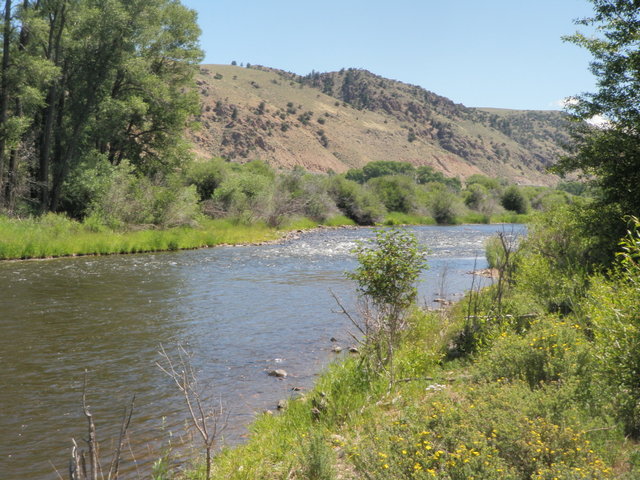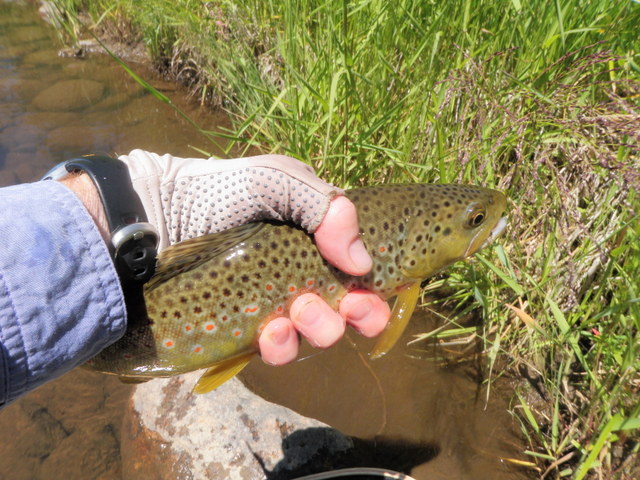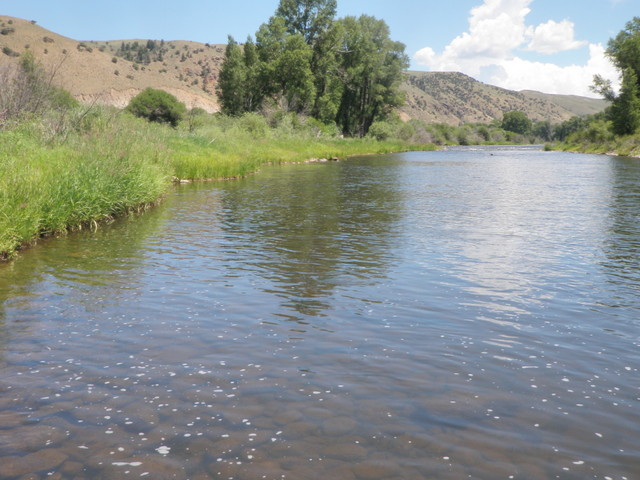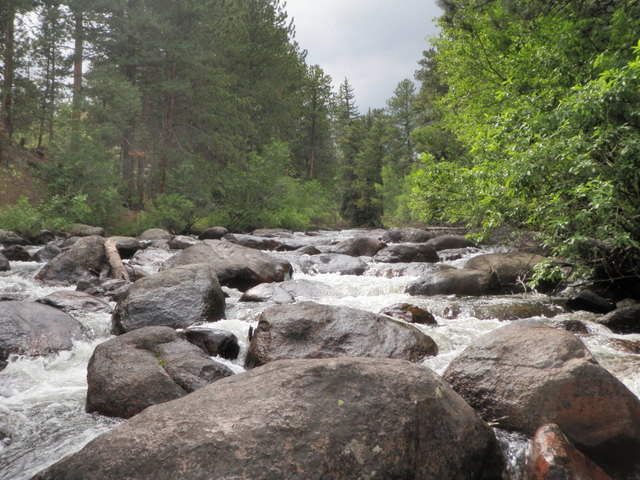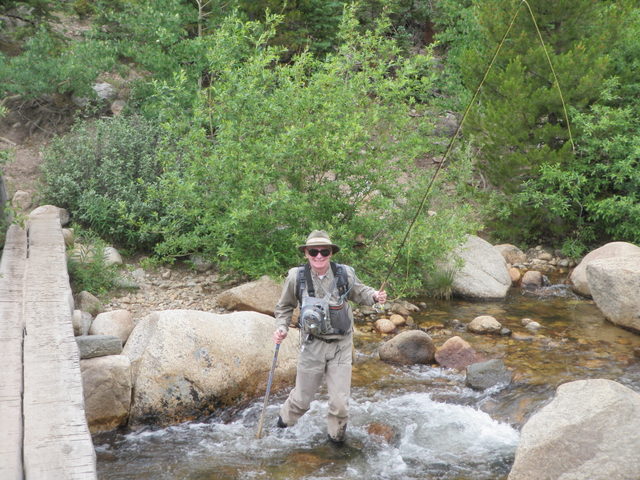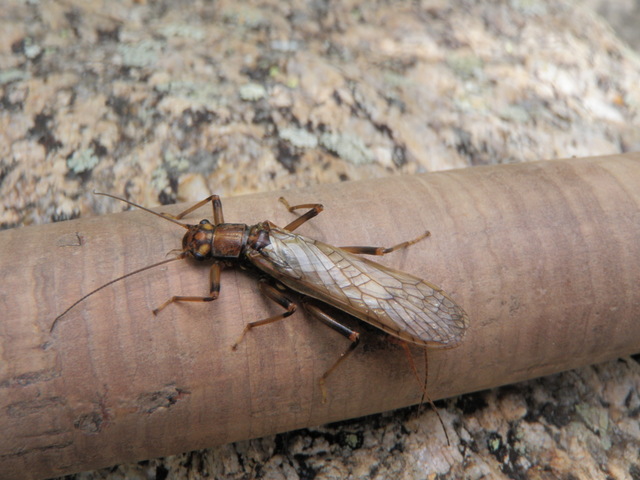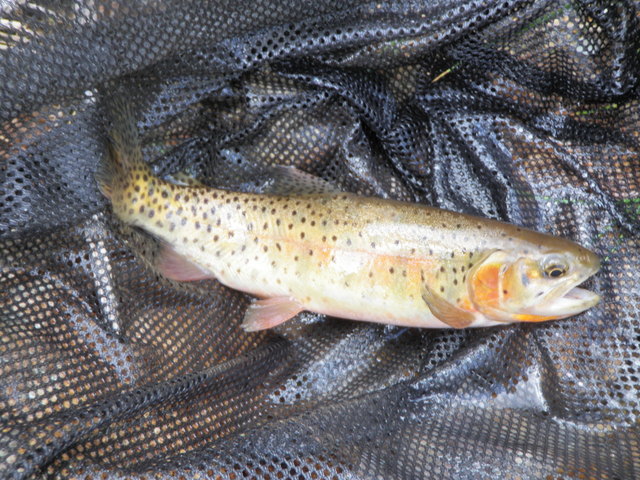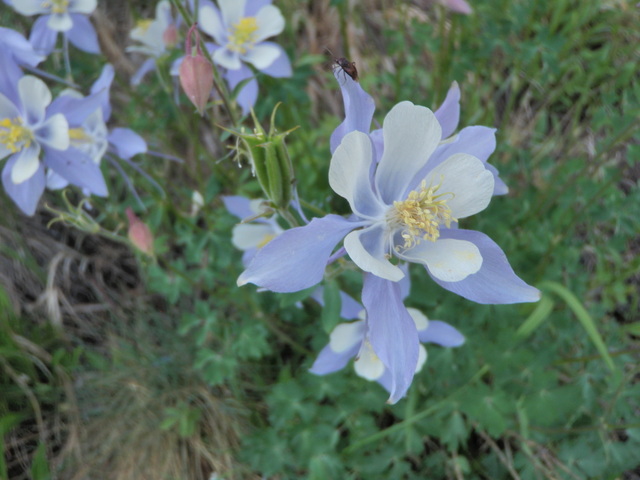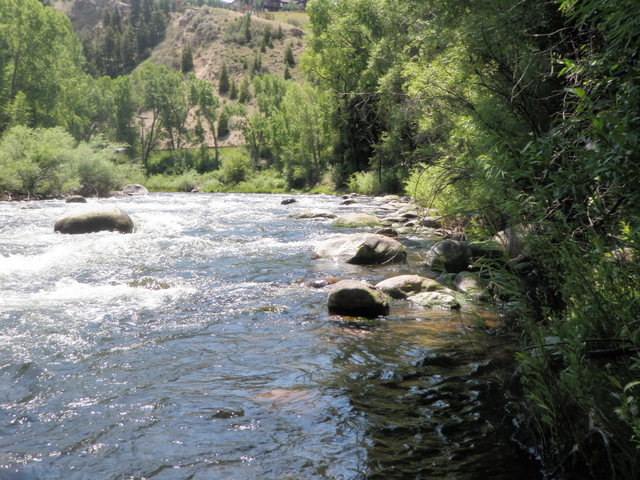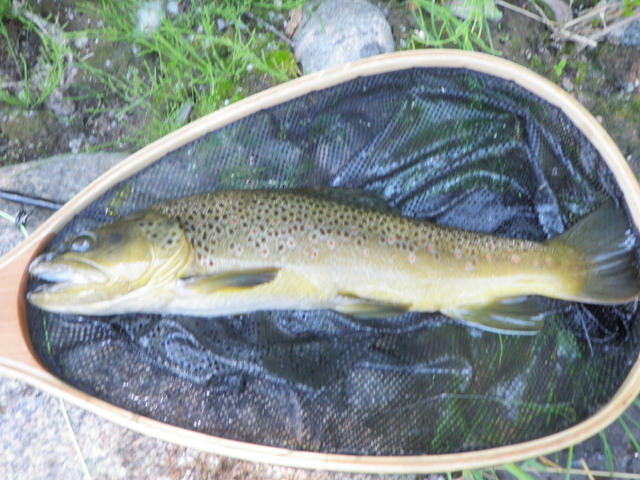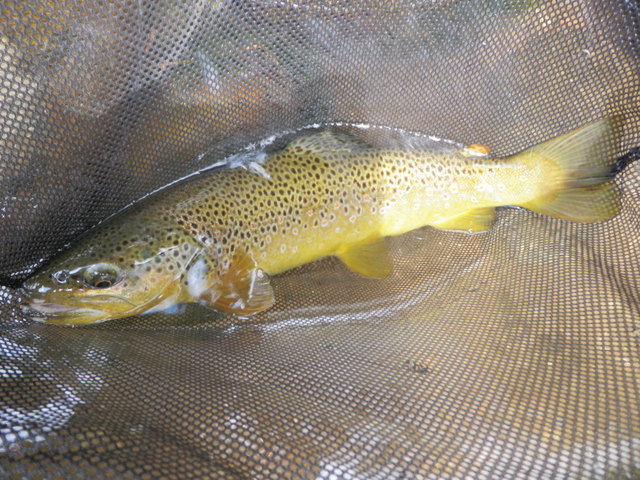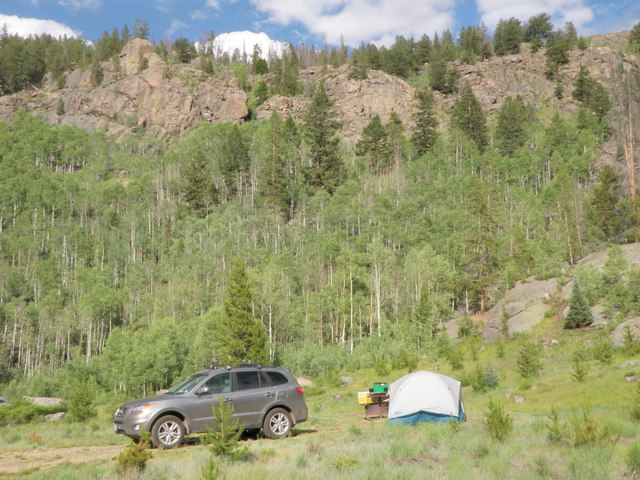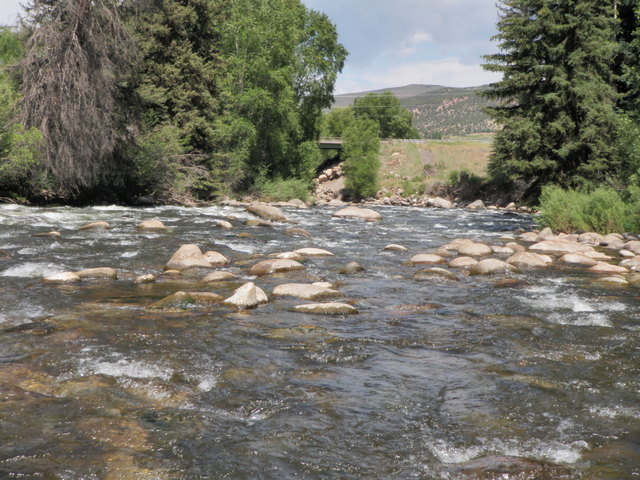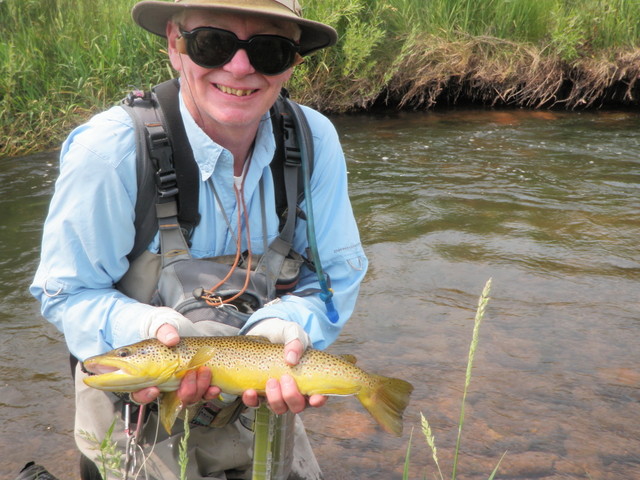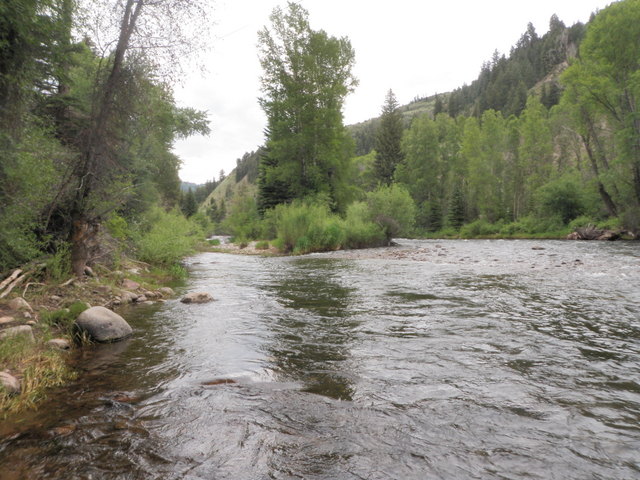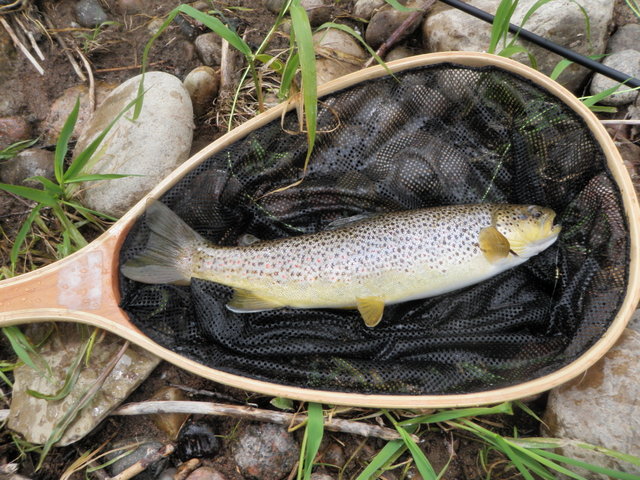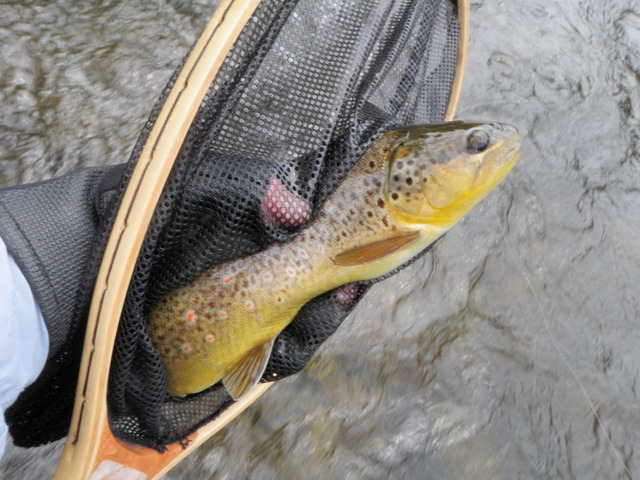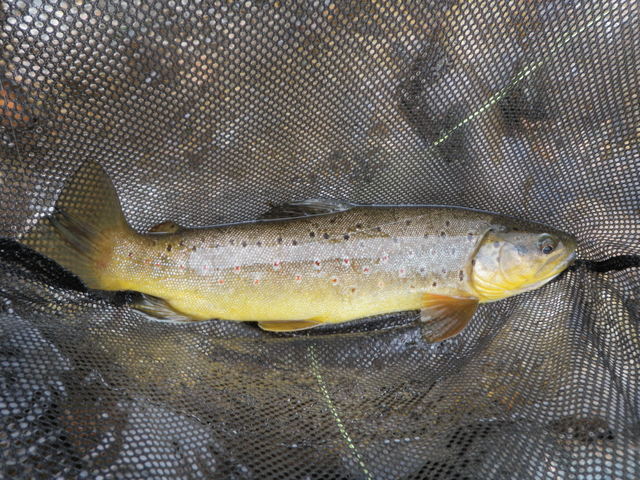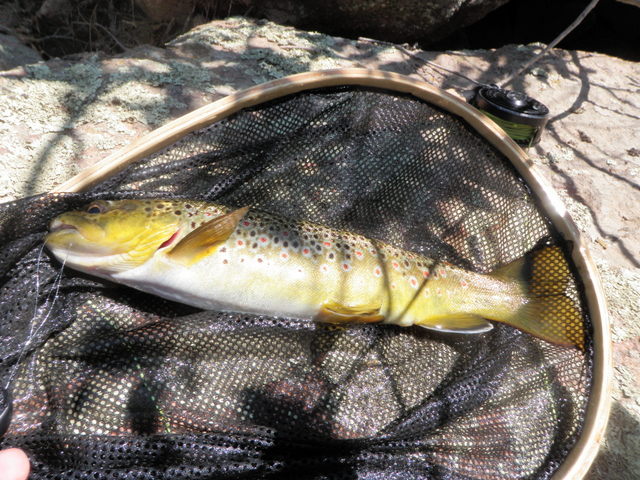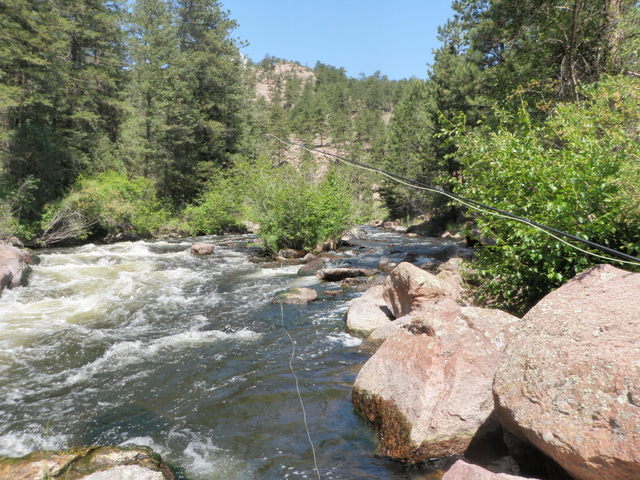Time: 9:30AM – 4:00PM
Location: Sunset lease, second access west of Parshall
Fish Landed: 5
Colorado River 07/17/2013 Photo Album
With Dave Lach, an employee of Air Products and a friend of my fishing buddy Jeff Shafer, spending the coming weekend fishing in Colorado, I decided to make a scouting expedition to the Colorado River to determine whether it was worthwhile for Dave L. to make the detour to Parshall to fish on Saturday on his way to the Frying Pan River.
The reports indicated that fishing was four stars with pale morning duns, yellow sallies, and caddis present. I’m somewhat skeptical of these reports since I’ve been burned by them, and the fly shops tend to overhype the conditions to attract customers and they are notoriously shabby in keeping the information current. I made one trip to the Colorado River in 2012, and it was very difficult fishing. In 2011 I visited this stretch of river three times with poor results. In the three years prior to 2011, however, I experienced some of the best fishing I’ve ever had in Colorado. So what would 2013 be, Jekyll or Hyde?
I had everything prepared Tuesday night so that I launched from my house by 6:40 and this enabled me to avoid the morning traffic rush and I was the first car in the parking lot at the Sunset access point by 9AM and I was in the water fishing by 9:30AM. Fortunately I doused myself in insect repellent prior to descending the sagebrush bank to the river where swarms of mosquitoes buzzed my ears with every step through the shrubs and grasses along the river.
I decided to head downstream first and walked as far as I could along the north bank and then crossed at the top of an island and began walking down the south side of the island. I spotted another fisherman in the north braid and then another fishermen fishing downstream at the bottom end of the island in the south channel so I tied on a Chernobyl ant and beadhead hares ear and quickly covered the center run at the top of the south braid with no success.
When I got to the top of the island I moved to the south bank where there is some nice smooth water in shadows with moderate depth. The north channel fisherman had now moved to the top of the island as well, and he opted to test the nice riffles along the north bank. Ultimately I had my eye on the beautiful long pool just above me, so I was concerned the other guy would usurp my target water. As I began prospecting the ten feet of water out from the bank, I spotted a few sporadic rises, and determined that the dry/dropper wasn’t what they were seeking so I began a game of trial and error with dry flies. I tried a light gray caddis and a light gray comparadun and a parachute ant. There were a bunch of spinners bobbing above the riffles to my left, so I dug in one of my boxes and found a rusty/tan sulfur spinner I’d tied for Pennsylvania and tested it for awhile as well. None of these offerings did the job and I moved up to a point where a gentle current angled toward the bank and then deflected parallell to it.
In this area I spotted two fish working, I think, although it may have been one cruiser doing a circular route. I believe, however, that a smaller fish was in the nervous water where the current angled and this fish made two or three splashy rises separated by quite a bit of time. The other fish was a large cruiser that was in the slow water just above the angled current and five feet out from the bank. I know this fish was larger because I could see the back fin and the tail out of the water, and the distance from nose to tail was substantial. Unfortunately I placed all the flies I mentioned including double dries over these fish and they would not respond so after an hour of fishing I moved on with nothing to show for my efforts.
I moved on to the previously mentioned long pool as the other fisherman retreated back to the north channel next to the island. The long pool is probably half a football field long and is characterized by a wide riffle at the head that angles toward the south bank and then the main current flows along the bank but there is nice water with decent depth twenty feet out for most of the length of the pool. I elected to wade to the riffle area at the top using the shallow barren north water, and then I decided to tie on a yellow Letort hopper and salvation nymph. The Chernobyl was difficult to see in the sun glare, and the large wing of the hopper was much more visible. I also hoped that the yellow fly might be mistaken for a golden stonefly.
All this was good in theory, but it didn’t pan out in my real life application. I fanned casts across the entire width of the riffle where it enters the long pool and deepens and then worked downstream shooting longer casts close to the bank. It was a lot of exercise with only a swirling refusal to the hopper in the eddy seam below an exposed rock to show for the effort. After this thorough coverage of the long pool area I decided to move on to the next juicy pool upstream. This required a hike along the south bank through swarms of mosquitoes, and when I arrived next to the pool I decided to eat my lunch early as it was approximately 11:15AM.
After lunch I retraced my steps to the tail of the pool and crossed to the north side and as I did this I spotted some rising fish at the left tail. Having seen the spinners bopping above the riffles, I decided to give the sulfur yellow-rust spinner another try. This turned out to be a prescient move as I landed a pair of thirteen inch browns that smacked the spinner. I was pretty excited to get on the scoreboard, and the fact that they took the spinner was icing on the cake. In additon I experienced a heart stopping swirl, a refusal, in the same area.
I paused to seine the river with my net and found a solitary PMD dun so I replaced the spinner with a size 16 light yellow comparadun, and this created another slashing refusal and then I connected on a fish near the bank, but the weight on the rod was only momentary as the fish escaped. Just above the scene of these near misses I could see a nice fish working the deep trough next to the bank. I positioned myself and made quite a few casts above the fish by shooting line high and letting the fly flutter down into the slow current. In spite of my best presentations I could not fool the nce cruising brown.
I finally surrendered to the fish at the tail of the pool and moved up to the midsection where I paused to observe for rises, but none were forthcoming. The top third of the pool looked like nymphing water so I added a strike indicator, small split shot and a beadhead hares ear and pheasant tail, and worked my way back down to the middle as I cast the flies to the current seam and the deep water along the edge of the riffles. I began noticing quite a few yellow sallies buzzing through the air, and then spotted two random rises so I gave up on the nymphs and went back to a fresh never before used yellow sally. I cast the yellow sally to the places where I’d seen a rise, but nothing was doing.
Having now covered the entire pool from top to bottom I elected to hike back to where I began the day. I was above the island and below the long pool and I began to cast to the area where I’d spotted a large brown working in the morning. The yellow sally wasn’t attracting any attention but I spotted another single PMD dun, so I exchanged them, and the PMD also failed to bring any fish to the surface. I pondered my next move and decided to add a parachute ant with an orange wing post as my second dry fly, and similar to the Eagle River, a large fish made my heart stop when it put its nose against the ant but refused to sip it. I made a few more casts, and then switched the fat bump ant for a skinny version. After some more drifts a ten inch brown aggressively attacked the PMD and I had my third fish on the day.
Having disturbed the area on the south bank I turned my attention to the nice long run along the north bank. and here I landed two small browns on the skinny ant. After I’d fished the north bank I waded back to the top of the long pool and observed the area for quite a while hoping a fish would give itself away. I was particularly focused on the nice deep run along the south bank, but nothing cooperated so I quit at 4PM and battled through the mosquitoes to the parking lot and escaped to make my two plus hour drive back to Denver.

